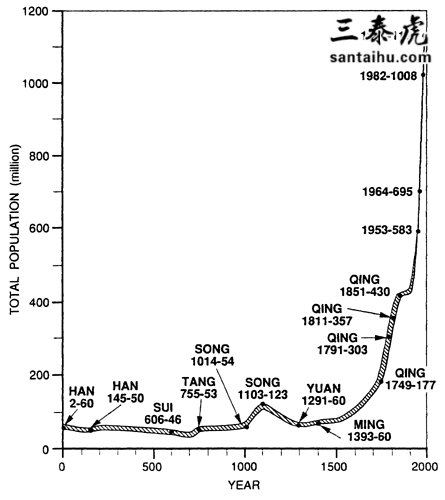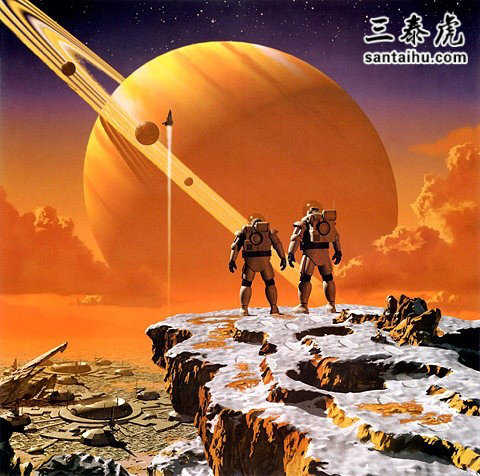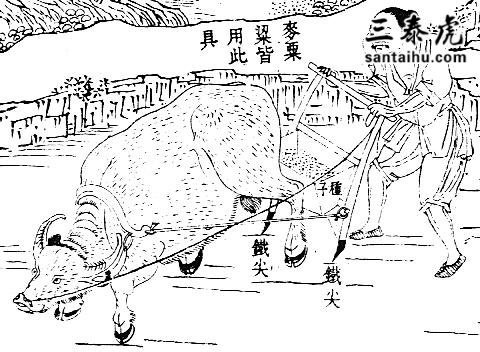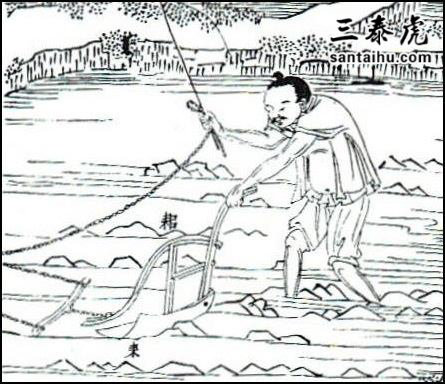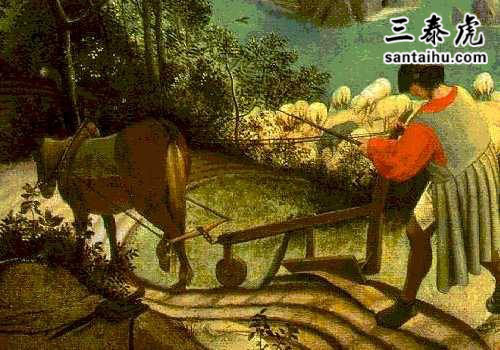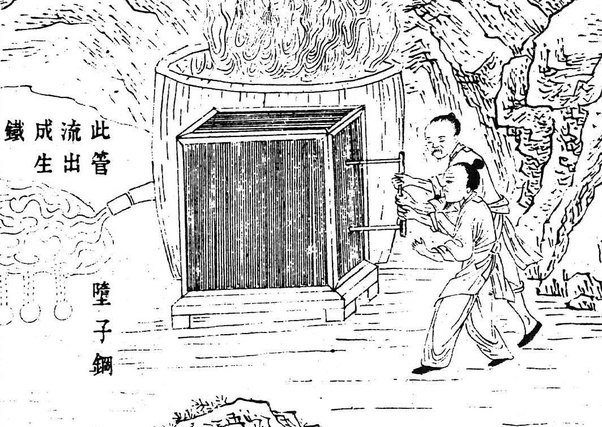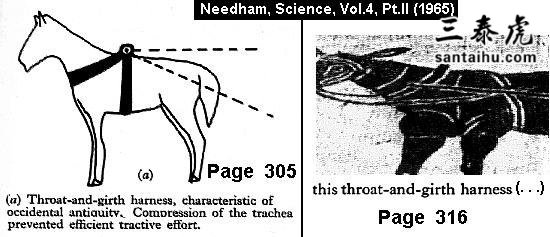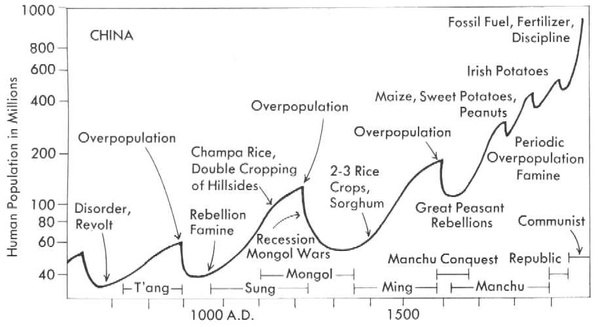美版知乎:历史上,中国是如何养活如此庞大人口的
What aspect of Chinese characteristics contributed to its huge population throughout history?历史上,中国人
What aspect of Chinese characteristics contributed to its huge population throughout history?
历史上,中国人的什么特点促成了中国如此庞大的人口?
QUORA网站读者评论:
Timothy Chu, vegetarian, search analyst/software engineer
China's population comes from the proximity of three great river systems (Yellow, Yangtze, and Pearl), the introduction of new crops (in China's case, rice in the Song Dynasty), and a stable empire. Historians attribute these river systems and viability of agricultural land to the growth of civilization and populations around the world. And though China has a historically large population, it was comparable if not less than contemporary empires of similar size in Persia and India, from the earliest days of civilization up until the mid 20th century.
There's a curious phenomenon in Chinese population that sheds light on the factors governing China's population. You can see it in the below graph:
中国的人口来自三大河流水系(黄河、长江和珠江),新作物的引进(中国宋朝的水稻),以及稳定的王朝统治。历史学家认为这些河流水系和农业土地的生产能力为全世界文明和人口的增长做出了贡献。尽管中国历史上一直有着庞大的人口,但从文明早期到20世纪中叶,其规模与波斯和印度当代的王朝相当。
中国人口中有一种奇怪的现象,它揭示了控制中国人口的因素。你可以在下面的图表中看到:
Noe that the Tang dynasty (one of the largest and most prosperous) has a comparable population with the Han, which preceded it by 700 years. China's population holds stable at ~49 million for a thousand years from 2 AD to 1000 AD. This occurred in spite of innumerable scientific and cultural advances (including China's Four Great Inventions). So what's the deal? China's population hit its carrying capacity in terms of arable land.
Consider the large spike in 1103. This spike is due to the spread of rice culture from Vietnam. The population surge was confined to China's wet, Southern regions where rice flourished. The decrease in the Yuan is due to the breakdown of the Song Dynasty and the devastating Mongol Wars. The rise in the Ming coincides with the spread of potatoes and other crops from the new world, which opened up previously unused land for agriculture. The increases in the Qing are due to increasing numbers of new world crops being introduced, as well as the spread of rice terracing and improved irrigation techniques.
唐朝(最伟大、最鼎盛的朝代之一)的人口可以与700年前的汉朝相差不大。从公元2世纪到公元1000年,中国人口稳定在4,900万左右。尽管中国人取得了无数的科学和文化进步(包括中国的四大发明)。那么,这是怎么回事呢?在耕地方面,中国的人口达到了其承载能力。
1103年的大穗是一个原因。这是因为越南水稻文化传入中国。人口激增仅限于中国潮湿的南方地区,那里盛产水稻。元朝人口的减少是由于宋朝的倒台和毁灭性的蒙古战争。明朝人口的增加与马铃薯和其他来自新世界的农作物的传播同时发生,人们开辟了以前未开垦的土地用于这些农作物的种植。清代人口的增加是由于从新世界引种作物数量的增加,以及水稻梯田的推广和灌溉技术的改进。
River Valleys:
Chinese civilization sprang up near two large river valleys, the Yellow River and the Yangtze River. The capital of every main Chinese dynasty except the Yuan and the Qing was located on one of these two rivers. These vast river systems endowed China tremendous agricultural potential., and for most of history most of China's population was concentrated in the areas surrounding these two rivers.
河谷:
中华文明在黄河和长江这两个流域附近兴起。除了元朝和清朝,中国各主要朝代的首都都位于这两条河流之一。这些广阔的河流系统赋予中国巨大的农业潜力,在历史上,大多数中国人口集中在这两条河流的周边地区。
Rice Cultivation
The introduction of new strains of rice from Vietnam caused the population to double from the ~50 million of the Han and Tang dynasties (206 BC - 195 AD and 618 AD- 907 AD respectively ) into the ~118 million of the Song dynasty in 1120 AD. Rice was able to grow in very wet regions which were previously not suited for agriculture and high caloric output. The population growth of the Song is almost entirely confined to rice growing areas, and the advent of rice shifted the Chinese population center away from the North towards the South near the Yangtze River. The introduction of crops from the New World, such as potatoes and sorghum, had a similar effect
水稻的栽培
越南水稻新品系的引入,使人口从汉唐时期(公元前206年-195年,公元618年-907年)到公元1120年的宋代翻了一番,达到1.18亿。水稻可以生长于非常潮湿,原先不适合开展农业生产的地方。宋朝的人口增长几乎完全局限于水稻种植区,水稻的出现使中国人口重心从北方向长江以南转移。从新大陆引进作物,如马铃薯和高粱,也带来了类似的效果。
Stable Empire
Chinese civilization flourished under the post-Qin dynasties of China, which were by and large stable for hundreds of years. Stable institutions and functional infrastructure allowed China to achieve its full agricultural potential. Additionally, the Confucian mores of most Chinese dynasties emphasized the importance of agriculture and of benevolent policies towards farmers (in the Han dynasty around 0 AD, the emperors believed that if the government was inhumane to his people, it would cause earthquakes!). This meant the government was very concerned for the welfare of farmers, and this can be seen through the writings and transcribed political debates in the Emperor's court from the days of the early Han (~160 BC).
It is true that for many centuries, China did have some of the most advanced agricultural practices in the world for much of history; nevertheless, this was not a chief driver of population as the most upvoted answer to this question asserts.
稳定的王朝统治
中国文明在秦朝以后繁荣昌盛,几百年来基本稳定。稳定的制度和功能完备的基础设施使中国充分发挥了农业潜力。此外,大多数中国朝代的儒家习俗都强调了农业的重要性和对农民的仁政(大约在公元0世纪左右的汉朝,皇帝认为如果政府对他的人民不仁,会引发地震!)这意味着政府非常关心农民的福祉,这可以从汉初(公元前160年)皇帝宫廷的著作和誊写的政治辩论中看出。
的确,在许多世纪里,中国确实有一些历史上最先进的农业耕种技术;然而,正如对这个问题最被质疑的回答所断言,这并非人口增长的主要驱动力。
Julien Benney, studied at RMIT University
Essentially, the factor that causes China’s huge population is a combination of three factors that rarely meet:
1.sizeable areas of extremely fertile soils that could support rural population densities higher than many cities in Australia and the United States
2.these fertile soils occurring in a climate with a hot and humid period that allowed for very high-yielding cereals
3.the existence of mammals with strong enough herd structures for domestication to allow for easy plowing
从本质上说,造成中国庞大人口的因素是三个因素的罕见结合:
1.广阔的极富肥沃土壤,可以供养人口密度高于澳大利亚和美国许多城市的农村人口
2.这些肥沃的土壤出现在气候炎热湿润、谷物产量极高的时期。
3.具有足够强大的畜群结构以便驯化适合耕作的哺乳动物
These two factors are a direct result of the continuing uplift and erosion by ice of the Himalayas, which has created via cycles of loess deposition and erosion the extremely fertile soils of Northern China.
Whereas the median level of available phosphorus in soils throughout geological history has been around 5 parts per million, the average in Northern China is twenty to thirty times that level (one hundred to 150 parts per million). The figures are similar for key chalcophile nutrients like zinc and copper (except in dry areas where they become less available but still abundant). As a result, nutritious plants could be grown to very high yields highly sustainably for virtually no chemical inputs (aside from animal waste) as the soils renew themselves so consistently.
这两个因素是喜马拉雅山冰层持续抬升和侵蚀的直接结果,它通过黄土沉积和侵蚀的循环创造了中国北方极富肥沃的土壤。
然而在整个地质历史中,土壤有效磷的平均水平约为百万分之5,华北地区的平均水平达到20-30倍水平(百万分之100-150)。这些数字与锌和铜等关键亲铜营养素相似(除了干旱地区,虽然较少但仍然丰富)。因此,由于土壤不断自我更新,几乎不需要使用化学品(除了动物粪便),植物可以可持续地高产量生长。
Andy Lee Chaisiri, a fan of the swords
Chinese technology was 1,000+ years ahead of everyone else (in certain fields)
中国技术比其他国家领先1000年(在某些领域)
Like this, but with horses and rice.
Imagine if today's crops suddenly became 30x more productive, that would cause a population boom, right? Agriculture is how human populations exploded in size compared to hunter-gatherer civilizations. So let's talk about some of those tools of agriculture and how population booms were achieved in an era of horse and plow:
Seed Drill: "What if we planted the seeds under the soil?"
像这样,但是换成马和大米。
想象一下,如果今天的农作物突然增产30倍,那会引起人口激增,对吧?与狩猎采集文明相比,农业带来了人类人口爆炸式的增长。因此,让我们来谈论一下这些农业工具,以及在马和犁的时代如何实现人口激增:
播种机:“如果我们把种子埋在土壤里会怎么样?”
Seed drills are tools that bury seeds at a correct depth in a timely manner. Planting seeds at a good depth increases the chances of an individual seed sprouting, without being eaten by birds. The use of seed drills also allows for planting in nice orderly rows with good spacing so the sprouting plants have enough room to draw nutrients from the soil without mutually starving each other. Not every grain will germinate, but using seed drills to plant crops in rows increases the chances of any individual grain germinating. This allows you to eat more grains because you know only a small quantity is needed to replant fields.
Chinese were using metal multi-tubed seed drills as early as 200BCE. Seed drills make an appearance in Europe in 1566CE, about 1700 years after their appearance in China.
播种机是可以在正确的土壤深度高效播种的工具。在适宜的深度播撒种子会增加种子萌发的机会,还不会被鸟类吃掉。播种机的使用也让植株保持良好的队列和间距,使发芽植物有足够的空间从土壤吸取养分而不互相争抢营养。不是每粒谷物都会发芽,但是用播种机成排地种植庄稼会增加每粒谷物发芽的机会。这会让您吃到更多的谷物,因为你知道来年播种时只需要少量的谷子。
早在公元前200年,中国就采用金属多管播种机。播种机在公元1566年才在欧洲出现,比它们在中国的出现晚了1700年。
Limbourg Brothers for the Duc de Berry (ca. 1415) 'Les Tres Riches Heures
林堡兄弟
Imagine a plough. You'd probably think of something made out of metal (perhaps with a wedge) right? Well, plows weren't always like that. The earliest ploughs in human history were basically a plank of wood that you knifed into the ground. Around 300BCE, Chinese started using plows that were shaped in a way that they simultaneously cut into the earth and turned it too by 100CE, they were made entirely out of iron. Turning the earth is important for getting more nutrients out of your land, and can even turn 'barren' land fertile.
Around 400CE, a similar mouldboard plow appears in the Roman empire, but widespread adoption is delayed with the fall of the empire. In 1700CE Dutch traders brought Chinese iron mouldboard plows back to Europe, and an agricultural revolution soon followed. Now, what was plowing like without an iron mouldboard plough?
想象一下犁。你可能会想到用金属制成的东西(也许有楔子),对吧?嗯,犁头并不总是这样。人类历史上最早的犁基本上就是一块木头,像刀子一样劈入地里。大约在公元前300年左右,中国人开始使用犁,这种犁的形状能同时劈入土壤又把土翻起,公元前100年,犁已经变成铁制的了。翻土对于从土地中获取更多的营养很重要,甚至可以使“贫瘠”的土地变得肥沃。
大约在公元400年左右,类似的犁板出现在罗马帝国,但随着帝国的衰落,犁的普及被推迟了。公元1700年,荷兰商人把中国的铁犁运回欧洲,不久就发生了一场农业革命。现在,没有铁犁的话,犁地是什么样的?
A painting from the 16th century showing a farmer at work, by Pieter Brugel
十六世纪Pieter Brugel的一幅油画,作品中有一位农民
That is a piece of wood being used to slice into the ground. Because that wooden plough doesn't have a mouldboard the cut soil needs to be tilled through further labor. Iron was expensive and labor intensive to produce, so at best you would have a thin sheet of iron covering the edge of your mostly wooden plough.
So, why did Chinese have all of these iron agricultural tools centuries earlier than Europeans? Because their methods of iron (& steel) production were also centuries ahead.
Blast Furnace: "Like baking a sponge cake made of iron"
那是一块被用来刨到地里的木头。因为那个木犁没有犁壁,所以需要通过后续的劳作来耕地。铁的价格昂贵,加工强度大,所以最多只能用薄薄的铁片盖住加到木犁的边缘来使用。
那么,为什么中国人能比欧洲人早几个世纪拥有这些铁制农具呢?因为他们的钢铁生产工艺的发明也比欧洲人提早了几个世纪。
高炉:“像烘焙铁做的海绵蛋糕”
The Iron Age is considered to have begun around 1700-1500BC. To extract iron from an ore of iron oxide, the iron has to be separated from oxygen and other impurities in a high temperature process which takes carbon to extract the oxygen out of the ore as carbon dioxide. This is called 'smelting'.
The earliest smelting of iron ore was done at temperatures below the melting point of iron. This left a spongy mass of iron that needed to be shaped by hammering, a very work intensive process.
But some time around 600BCE, Chinese developed a furnace that could create a heat intense enough to melt iron, the blast furnace. Once liquified, iron could be poured into casts already in the shape of tools that were needed. The iron casting industry was officially supported by dynastic governments, leading to widespread adoption of iron tools made to a standard.
Now a special note about the difference between iron and steel. Cast iron is very high in carbon content, making it hard but brittle. Steel is iron that has a perfect balance of carbon to retain an edge but also maintain just enough flexibility to avoid brittleness. Around 200BCE, Chinese learned that if air was blown over iron as it was being cast the carbon content could be reduced and what you wound up with was steel. Around 600CE steel tools began to widely replace iron ones.
铁器时代被认为始于公元前1700年至1500年左右。为了从氧化铁矿石中提取铁,必须在高温下将铁从氧气和其他杂质中分离出来。这就是所谓的“熔炼”。
最早的铁矿石冶炼是在低于铁熔点的温度下进行的。这留下了海绵状的铁块,需要通过锤击来成形,这是一个非常辛劳的加工过程。
但是大约在公元前600年,中国人发明了一种炉子,这种炉子可以聚集足够强的热量来熔化铁,这就是高炉。一旦液化,铁可以倒入铸件,根据所需工具的形状铸造出来。铁铸业得到历代政府的正式支持,导致铁制工具广泛采用同一个标准。
现在请特别注意铁和钢的区别。铸铁的碳含量很高,使它虽然很硬但也很脆。钢是碳平衡良好的铁,能保持足够的韧性以避免脆性。大约在公元前200年,中国人了解到,如果铸铁时遇到空气,碳含量会降低,最后得到钢。大约公元600年,钢刀具开始广泛取代铁制工具。
The earliest evidence of blast furnaces in Europe is 1100CE, with widespread adoption occuring in 1400CE. The process of creating steel I described above first appears in the western world in 1855CE, and there's some contention that the 'inventor' may have actually gotten the idea from Chinese workers in the US.
As another illustration of the difference in iron production, by 1078CE the foundries of northern China could produce 114,000 tons of iron a year. In 1788CE, England produced about 50,000 tons of iron.
Horse Collar: "Over 1,000 years of choking horses"
在欧洲,高炉最早于公元1100年出现,在公元1400年得到广泛使用。我上面提到的钢的锻造法在西方世界最早出现在公元1855年,有人认为“发明者”可能是从美国的中国工人那里学到的技术。
作为铁生产能力差异的另一个例证是,到公元1078年,中国北方的铸造厂一年可以生产114000吨铁。公元1788年,英国只能生产约50000吨的铁。
马项圈:“超过1000年的勒马史”
Imagine a horse pulling a plough. Now, how did you imagine that plough being attached to the horse, with a horse collar, right? Unfortunately for horses, before the collar was invented there was the throat girth harness, which sounds as awful as it is. A plough (or any other load) attached by a throat-girth harness means that a horse is basically pulling with a noose around his trachea. Around 300BCE, someone in China thought "What if the horse pulled with its chest instead of its throat?" and so the breast-strap harness was born and horses across China breathed a sigh of relief. This was improved on in 500CE with the horse collar as we know it.
The breast strap harness appears in Russia in 700CE, and shows up further west in Norway around 800CE. The horse collar appears a bit later in 900CE, with widespread adoption by 1200CE.
The difference between China and Europe's population levels throughout history is the difference between their agricultural technology.
想想马拉犁的情形。现在,你想知道如何把那把犁拴在马身上,用马圈,对吧?对马匹来说,不幸的是,在项圈发明之前,用的是喉部绳带,听起来很可怕。犁附在喉绳带意味着马犁地的时候基本上就是用绳套勒住气管。大约在公元前300年,中国有人想“如果让马用胸而不是喉咙拉犁呢?”于是,胸带挽具就诞生了,中国各地的马匹解放了。
这种胸带挽具在公元700年出现在俄罗斯,公元800年左右出现在挪威西部。马项圈的出现稍晚于公元900年,在公元1200年被广泛采用。
历史上中国和欧洲人口水平的差异就存在于农业技术的差异。
Balaji Viswanathan, Knowledge lover.
Short summary:
1.Water: China has a number of major river basins at the right latitude.
2.Land: Although Earth is huge, less than 5% of area is actually suitable for dense settlement. Eastern China accounts for a sizable chunk of this. Tropic of Cancer is among places to start a civilization as equatorial regions have too dense rain forests, temperate zone is too cold & infertile and a lot around Tropic of Capricorn is occupied by water and deserts. Around the tropic of cancer was found all the major world civilizations.
3.Food: 1 and 2 means that there was a lot of food to produce. Throughout history, China and India were the leading producers of food and that continues to this day, despite US springboarding with their tech in the past century.
4.Stability: China has had stable kingdoms for about 4000 years. Only a few other regions of the world had this long a stability. Other than the Mongols, China has had no other enemy to fight (guarded by the Pacific, Siberia, Central Asian deserts and Tibetan plateau). Even the Mongols got assimilated quite quickly (as Yuan dynasty). In rest of the world (such as Baghdad) they were terrible.
5.Disease: Europe has had bubonic plagues that would wipe half the population in a single go. Native Americans were almost wiped by Smallpox on a single go. Africans had to content with Malaria & other tropical diseases. China has not had such major outbreaks that would wipe quarter or more of the population (although there were a few Influenza & plague attacks that impacted 10% or more of the population).
简短摘要:
1、水:中国在合适的纬度有许多主要的河流盆地。
2.土地:虽然地球很大,但实际上只有不到5%的面积适合密集聚落。华东地区占相当大的一部分。北回归线是文明起源的地方之一,因为赤道地区雨林过于茂密,温带地区寒冷而贫瘠,而南回归线则被水和沙漠所占据。在北回归线周围出现了世界上所有的主要文明。
3、食物:第1和2点意味着能生产很多食物。纵观历史,中国和印度是食品的主要生产国,尽管美国在上个世纪开始利用他们的技术跳板,但这种状况一直持续到今天。
4、稳定性:中国历史上有4000年的时间都有着稳定的王朝。世界上只有少数几个地区有这么长的稳定时期。除了蒙古,中国没有其他强大敌人(由太平洋、西伯利亚、中亚沙漠和青藏高原保卫)。甚至蒙古人也很快就被同化了(如元朝)。在世界其他地方(如巴格达),他们是可怕的存在。
5.疾病:欧洲曾发生过一次鼠疫,一次瘟疫就消灭了一半人口。美洲土著几乎被天花绝杀。非洲人无法摆脱疟疾和其他热带疾病。
Joseph Boyle
Imperial policy was concerned with farmers' livelihood and maintaining population, sometimes including tax reduction, land ownership reform, and sponsoring settlement of new or marginal lands, as well as irrigation works and the iron tools Andy Lee Chaisiri mentioned. In the Qing this coincided with New World crops that would grow in previously nonarable hill areas.
中国皇帝的政策关注农民的生计和维持人口,有时包括减税、土地所有权改革、帮助人们去新土地或边际土地定居,以及安迪·李·查西里提到的灌溉工程和铁工具。在清朝,这与新大陆的农作物在先前无法耕种的丘陵地区开始种植是一致的。
Robin Daverman, World traveler
China was incredibly advance in farming since 3000 BCE. An acre of rice paddy will produce 5000 lbs of rice, enough to feed 10 people for a year. An acre of pasture is only sufficient to keep one cow, not even remotely enough to feed even one person. China cultivated rice and built extensive irrigation systems a couple thousands of years ahead of everybody else.
At the height of Athens around ~ 500 BCE, it had 40,000 citizens. Athens never built irrigation systems and the farming was left to the mercy of the weather. During the same period of time, China had 50 million citizens, and sophisticated man-made canals criss-cross the whole country. And the population just kept on growing...
自公元前3000年以来,中国在农业方面取得了惊人的进步。一英亩稻田能生产5000磅大米,足够养活10人/年。一英亩的牧场只够养一头牛,甚至远不足以养活一个人。中国种植水稻和建设广泛的灌溉系统,这比其他国家提早了几千年。
大约在公元前500年的雅典,有40000名公民。雅典从来没有建立过灌溉系统,农业也全部听天由命。而当时的中国有五千万公民,复杂的人工运河纵横交错。人口不断增长…
Mervyn Locke, Enlightened laowai/Decade-long China resident/Permanent China bull
Nothing special. China’s area is vast and its population density is lower than that of Switzerland, in this respect it should not raise any eyebrows. In fact, the situation is rather the opposite - Chinese population is extremely good at keeping at childbirths in check - to a large extent thanks to Mao, who empowered women “to support half the sky”, thereby allowing them to fully control their own bodies as they please.
没什么特别的。中国幅员辽阔,人口密度低于瑞士,在这方面不应该大惊小怪。事实上,情况恰恰相反,中国人非常善于控制生育,这在很大程度上要归功于毛,他赋予了妇女“半边天”的权力,从而允许她们根据自己的意愿完全控制自己的身体。
Leah Ma, works at Retirement
I've always thought it was because they became unified earlier than Europe. Well, actually Europe never became unified. By becoming one nation that kept wars from decimating the population, allowing it to grow larger. Also they have basically one culture, one language (sort of) and, above all, NO RELIGION! Also I think Chinese began bathing earlier than westerners who believed it spread disease and used perfume to hide body odor.
我一直认为这是因为他们比欧洲更早地统一了。实际上,欧洲从来没有统一过。统一成为一个国家,不让战争摧毁人口,让人口得以增长。同时,他们基本上拥有同一种文化,同一种语言,最重要的是没有宗教!中国人比西方人更早开始洗澡,西方人早先认为洗澡传播疾病,用香水来掩盖体味。
Larry Blue
One thing - Rice.
Ok two things - rice and advanced irrigation systems.
No wait. Three things.
Rice, irrigation and administrative systems
一件事——稻谷。
好吧,如果非要说那就是两件事——稻谷和先进的灌溉系统。
不,等等。是三件事。
稻谷,灌溉和管理体制
Vic Mayten, worked at Culture of China
Chine is not over populated, it's just the biggest country in the world population wise (and it is big), and taking into account the size of China its population density is not as high as it seems.
中国并不是人口过多,中国只是世界人口最多的国家(中国很大),考虑到中国的人口规模,中国人口密度并不像看上去那么高。
Alec Cawley, Liberal software engineer with a physics degree
China probably has the largest area of cultivated land of any country. Therefore it is not surprising that it has a population to match.
中国可能是世界上耕地面积最大的国家。因此,它有这样的人口规模是不足为奇的。
Gwydion Madawc Williams, Read a lot about this
China occupied a fair chunk of the world's habitable land. Not so densely populated on that basis.
But historically, it was much the best-run pre-industrial society.
中国占据了世界上相当大的一块可居住土地,人口密度也并不那么大。
但是,从历史上看,中国是最好的前工业化社会。
外文链接:https://www.quora.com/What-aspect-of-Chinese-characteristics-contributed-to-its-huge-population-throughout-history
版权声明
我们致力于传递世界各地老百姓最真实、最直接、最详尽的对中国的看法
【版权与免责声明】如发现内容存在版权问题,烦请提供相关信息发邮件,
我们将及时沟通与处理。本站内容除非来源注明五毛网,否则均为网友转载,涉及言论、版权与本站无关。
本文仅代表作者观点,不代表本站立场。
本文来自网络,如有侵权及时联系本网站。
阅读:
-
1
चाइना में रेडी और ठेले Local shops in china || L...
- 2
- 3
- 4
- 5
- 6
- 7
- 8
- 9
- 10
-
1
चाइना में रेडी और ठेले Local shops in china || L...
- 2
- 3
- 4
- 5
- 6
- 7
- 8
- 9
- 10
